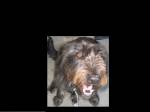
Air Campaigns
Want to start or join a group build? This is where to start.
Want to start or join a group build? This is where to start.
Hosted by Frederick Boucher, Michael Satin
"Down Low" - WW2 tank busting Official Thread
Posted: Sunday, January 21, 2007 - 01:10 AM UTC
Got a good amount of my P-47 done today the cockpit tub is done OOB with Eduard etch belts and sandwiched into the fuselage and the engine is nearly compleated (just needs weathering) There's only photos of the cockpit, hopefully I'll get the rest up within the next few days (once i've recharged my camera battery) 




Tigerbait

Joined: September 28, 2005
KitMaker: 347 posts
AeroScale: 179 posts

Posted: Sunday, January 21, 2007 - 01:42 AM UTC
Looks good Allen! 

Posted: Sunday, January 21, 2007 - 01:46 AM UTC
I would post a pic of my P-47 Thunderbolt however its exactly the same as Tomcat's except a few knob and switch colours. 

Posted: Sunday, January 21, 2007 - 04:58 AM UTC
Yo! I'd like to enter if it could be extended beyond June? Would enter a rather evil Hurricane IID in 1/32.It requires some scratch to pull off well,and I kinda got some other stuff on the stove. 

cheers for bigger plates!




cheers for bigger plates!




Tigerbait

Joined: September 28, 2005
KitMaker: 347 posts
AeroScale: 179 posts

Posted: Sunday, January 21, 2007 - 05:55 AM UTC
 Hello all. Here's a little more progress. the ID stripes on the bottom of the wing. I used Tamiya tape and acrylics.
Hello all. Here's a little more progress. the ID stripes on the bottom of the wing. I used Tamiya tape and acrylics.

Hope you like it so far...
Posted: Sunday, January 21, 2007 - 11:02 AM UTC
Hi all!
There are some fine entries in this Campaign...
Here is the current status of my Mustang build...
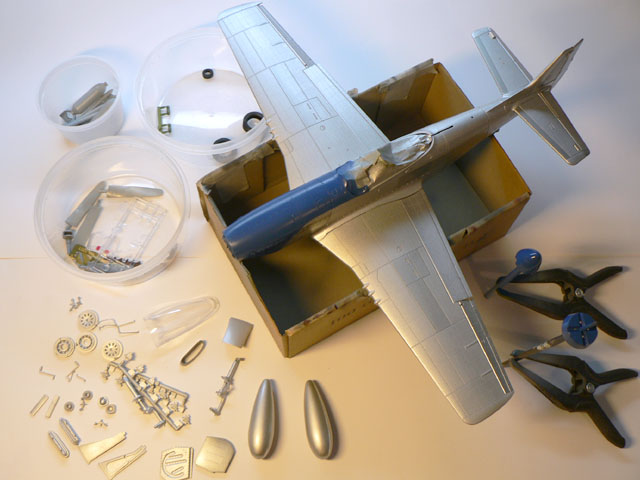
Jean-Luc
There are some fine entries in this Campaign...

Here is the current status of my Mustang build...

Jean-Luc

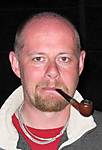
LongKnife

Joined: April 25, 2006
KitMaker: 831 posts
AeroScale: 688 posts

Posted: Sunday, January 21, 2007 - 02:52 PM UTC
Hi everybody.
it seems I'm not alone taking the first steps with airbush here. I made my first strokes on an old and failed Saab J 29 this weekend, and it will eventually look like a clown. But it's going to take a little more practice before I dare spray "live".
I made my first strokes on an old and failed Saab J 29 this weekend, and it will eventually look like a clown. But it's going to take a little more practice before I dare spray "live".
@ Grypho: That's one nice office you got for your Stuka. Are the belts prepainted or have you tinkered with them yourself?
@ Mark: I went to the local car part retailer and bought primer there. It works perfectly, at least for spray can and brush painting. I can't see why it should not work as a base for airbrushing. But as previously said: you will need a base coat of some sort to get an even surface before you paint.
it seems I'm not alone taking the first steps with airbush here.
 I made my first strokes on an old and failed Saab J 29 this weekend, and it will eventually look like a clown. But it's going to take a little more practice before I dare spray "live".
I made my first strokes on an old and failed Saab J 29 this weekend, and it will eventually look like a clown. But it's going to take a little more practice before I dare spray "live".@ Grypho: That's one nice office you got for your Stuka. Are the belts prepainted or have you tinkered with them yourself?
@ Mark: I went to the local car part retailer and bought primer there. It works perfectly, at least for spray can and brush painting. I can't see why it should not work as a base for airbrushing. But as previously said: you will need a base coat of some sort to get an even surface before you paint.
Posted: Sunday, January 21, 2007 - 03:58 PM UTC
Quoted Text
Yo! I'd like to enter if it could be extended beyond June? Would enter a rather evil Hurricane IID in 1/32.It requires some scratch to pull off well,and I kinda got some other stuff on the stove.

cheers for bigger plates!


I am planning to extend both the Vietnam campaign and the Tank busting campaign til the end of July due to the problems with signing up for the campaigns on this site. Hope this is enough to finish your bird. It is one that I would really like to see in our campaign.

@Tigerbait: Nice lines on that Typhoon. It will make a nice contrast to the camouflage.
@Jean-Luc and Tomcat31: Nice progress. It does not look like you need the extension of the deadline at the speed you are building

Posted: Sunday, January 21, 2007 - 04:19 PM UTC
Here is the list of participants. We are up to 22 participants so far. Sounds pretty good to me  Let me know if I missed somebody or if I got the different builds messed up.
Let me know if I missed somebody or if I got the different builds messed up.
Dirk-Danger, Undecided
Percheron, 1/48 Eduard Airacobra Mk. 1
klimmer, 1/48 Academy P-47D Thunderbolt
csch, 1/48 Hasegawa Hawker Typhoon 1b
Lucky13, 1/48 Hawker Typhoon
betheyn, 1/48 Tamiya P-47D Thunderbolt
lampie, 1/72 Tamiya P47 Razorback
Tomcat31, 1/48 Tamiya P-47 Thunderbolt
JollyRoger, 1/48 AMT Hs 129B-3
Grypho, 1/32 Hasegawa Stuka G Kanonenvogel
jRatz, 1/48 Undecided
SGTJKJ, 1/48 Hasegawa Hs 129 B-2
Tigerbait, 1/48 Hasegawa Typhoon
Sluff, 1/48 Hasegawa Hurricane mk II
VonCuda, 1/32 Hasegawa Stuka
Phantom II, 1/48 Hasegawa Henschel Hs-129
Blackwulf, 1/48 Dragon Ju88P-1
LongKnife, 1/72 Revell Grumman Hellcat
oleander13, 1/48 ICM Yak-9T
Spongya, Il-2
Jean-Luc, 1/32 P-51 Mustang
Camogirl, 1/48 Tamiya P-47 Thunderbolt
 Let me know if I missed somebody or if I got the different builds messed up.
Let me know if I missed somebody or if I got the different builds messed up.Dirk-Danger, Undecided
Percheron, 1/48 Eduard Airacobra Mk. 1
klimmer, 1/48 Academy P-47D Thunderbolt
csch, 1/48 Hasegawa Hawker Typhoon 1b
Lucky13, 1/48 Hawker Typhoon
betheyn, 1/48 Tamiya P-47D Thunderbolt
lampie, 1/72 Tamiya P47 Razorback
Tomcat31, 1/48 Tamiya P-47 Thunderbolt
JollyRoger, 1/48 AMT Hs 129B-3
Grypho, 1/32 Hasegawa Stuka G Kanonenvogel
jRatz, 1/48 Undecided
SGTJKJ, 1/48 Hasegawa Hs 129 B-2
Tigerbait, 1/48 Hasegawa Typhoon
Sluff, 1/48 Hasegawa Hurricane mk II
VonCuda, 1/32 Hasegawa Stuka
Phantom II, 1/48 Hasegawa Henschel Hs-129
Blackwulf, 1/48 Dragon Ju88P-1
LongKnife, 1/72 Revell Grumman Hellcat
oleander13, 1/48 ICM Yak-9T
Spongya, Il-2
Jean-Luc, 1/32 P-51 Mustang
Camogirl, 1/48 Tamiya P-47 Thunderbolt
Blackwulf

Joined: April 20, 2004
KitMaker: 215 posts
AeroScale: 120 posts

Posted: Sunday, January 21, 2007 - 10:50 PM UTC
So its:
Allied(US & GB & Can) 11 planes
Allied(Soviet) 3 planes
Axis(German) 6 planes
Axis(Japan) 0 planes(probably didnt have many tank busters)
Axis(Italy) 0 planes(did they have tank busters??)
Looks like us German folk need to establish heavy AA on the western front and proceed to peel open some T-34's on the Eastern front!!!
Allied(US & GB & Can) 11 planes
Allied(Soviet) 3 planes
Axis(German) 6 planes
Axis(Japan) 0 planes(probably didnt have many tank busters)
Axis(Italy) 0 planes(did they have tank busters??)
Looks like us German folk need to establish heavy AA on the western front and proceed to peel open some T-34's on the Eastern front!!!


oleander13

Joined: October 29, 2006
KitMaker: 30 posts
AeroScale: 28 posts

Posted: Monday, January 22, 2007 - 12:03 AM UTC
Hey guys,
I'm going to start on the Yak tonight and I was wondering if anyone else who has built this kit had any suggestions or areas to pay extra attention to during the build. I think I'm going to order some photoetch for the cockpit for extra detail, but I"m afraid that since this is my first build it might be more than I can handle.
What do you guys think?
I'm going to start on the Yak tonight and I was wondering if anyone else who has built this kit had any suggestions or areas to pay extra attention to during the build. I think I'm going to order some photoetch for the cockpit for extra detail, but I"m afraid that since this is my first build it might be more than I can handle.
What do you guys think?
Posted: Monday, January 22, 2007 - 12:17 AM UTC
Quoted Text
So its:
Allied(US & GB & Can) 11 planes
Allied(Soviet) 3 planes
Axis(German) 6 planes
Axis(Japan) 0 planes(probably didnt have many tank busters)
Axis(Italy) 0 planes(did they have tank busters??)
Looks like us German folk need to establish heavy AA on the western front and proceed to peel open some T-34's on the Eastern front!!!
Well, I am planning my second entry into the "Achtung JaBo" campaign on Arorama to be a German Ostwind fully tracked 37mm AA. That might be a problem for some of the P-47s and Typhoons coming down low

Maybe I should find a small 1/72 kit to build OOB to boost the Axis forces. I cannot think of any dedicated Italian or Japanese tank busters, but one could always do an Italian Stuka... :-) :-)
Posted: Monday, January 22, 2007 - 12:20 AM UTC
Quoted Text
Hey guys,
I'm going to start on the Yak tonight and I was wondering if anyone else who has built this kit had any suggestions or areas to pay extra attention to during the build. I think I'm going to order some photoetch for the cockpit for extra detail, but I"m afraid that since this is my first build it might be more than I can handle.
What do you guys think?
Well, do what you feel like. The main objective of this campaign is to have fun.

So considering that this is your first kit in many years I would build it straight form the box. (OOB) I am building my F-4 Phantom II for the Vietnam campaign OOB. Simply because it is my second jet fighter in many years.
Blackwulf

Joined: April 20, 2004
KitMaker: 215 posts
AeroScale: 120 posts

Posted: Monday, January 22, 2007 - 04:12 AM UTC
@Mark--photoetch isnt as hard as it seems. Just need some good superglue and the ability to work with miniscule parts. I think if you are going to leave an open canopy that PE looks good, but if it is going to be closed then it is a toss up. Remember a few things with PE, 1). hold the parts when cutting(they tend to catapult long distances and you have to listen to see where it hits), 2.) Try not to work over carpet(PE parts hide really well in the shag), 3.) Use good reference material so you can see how the part is supposed to actually look after bending and manipulating it. I think exterior PE can make a model stand out if done properly. Anyway, don't be shy--best way to learn is to do it. There are many articles on this site that you can read that will help you with your PE efforts. 


oleander13

Joined: October 29, 2006
KitMaker: 30 posts
AeroScale: 28 posts

Posted: Monday, January 22, 2007 - 05:42 AM UTC
Thanks a lot for the advice, I think I'm going to give it a try and see where it goes. Your right though, if I never give it a try how will I ever get better at it. Hopefully I can get some photo's up by the weekend of the first build.
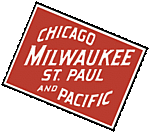
Lucky13

Joined: June 01, 2006
KitMaker: 1,707 posts
AeroScale: 1,119 posts

Posted: Monday, January 22, 2007 - 06:42 AM UTC
AIR FORCE
--------------------------------------------------------------------------------
1. RECENT GROUND-ATTACK TACTICS
Recent reports indicate that German Air Force units in North Africa have developed new tactics, involving the use of Focke-Wulf 190's and Messerschmitt 109's (single-engine fighters) as dive bombers in raids on ports, airdromes, roads, and gun emplacements.
a. Attacks on Ports
(1) By Day.—Four types of daytime attacks on ports have been noted.
In the first type, FW 190's escorted by ME 109's make a weaving approach at about 20,000 feet and, when near the objective, glide down to between 10,000 and 12,000 feet. The 109's then veer off to attract the antiaircraft defenses, while the 190's maneuver into attack position and make a steep dive from the sun. They always dive in line astern.1 The angle of dive is from 30 to 50 degrees, and the usual diving speed exceeds 400 miles per hour. At the end of the dive, the 190's are likely to bank to the right. After pulling out, they usually head straight for home, although sometimes they rejoin the 109's and both attack the target with machine guns. Occasionally the escort may dive with the bombing aircraft.
In the second type of attack, ME 109's approach at about 12,000 feet, make a shallow dive at full speed to 6,000 feet, and release their bombs at this altitude.
In the third type, FW 190's circle at 12,000 feet, and then peel off in a steep dive to about 6,000 feet; at this altitude the bombs are dropped.
The fourth type of attack involves Junkers 87's (the standard German dive bomber), which usually dive in formation, in line abreast, at a 60-degree angle from approximately 4,000 feet to drop their bombs at about 1,000 feet. Also, Ju 87's often approach at 10,000 feet, make a shallow dive to between 5,000 and 6,000 feet, and then release the bombs. They are immediately followed by FW 190's, which come over at 5,000 feet and dive steeply to 500 feet, disregarding antiaircraft fire. At 500 feet they release their bombs and then make an almost vertical pull-out.
(2) At Night.—Several variations in night attacks on ports have been reported. In one type the aircraft, perhaps Ju 88's, approach singly at about 10,000 feet, make landfall2 to the flank of the objective, and circle inland. The aircraft then head toward the sea, usually shutting off their engines and gliding down to 2,000 or 3,000 feet to bomb port installations. However, they sometimes make a steep power-dive from 6,000 feet to about 2,000 feet. After attacking port installations, the Germans always head out over the sea.
Ju 88's also make a high, level approach, and drop flares before they separate to make diving attacks from different directions. They may even approach evasively—abruptly changing direction a number of times—at altitudes of 8,000 to 12,000 feet, from which they dive to 2,000 feet in order to bomb.
b. Attacks on Airdromes
It is reported that the Germans have used a variety of methods in attacking airdromes. For example, fighters escorting FW 190's and Ju 87's often try to engage the opposition's fighter patrols at high altitudes while the Ju 87's execute a deep dive, pulling out at 7,000 feet. The 190's go in simultaneously with the 87's in a shallow dive, the leading plane diving at a slightly steeper angle and about 1,000 feet below. The bombing by the FW 190's has been more accurate than that by the Ju 87's.
Another maneuver carried out by FW 190's and ME 109's is a low-level approach from the sun, at an altitude of about 50 feet, to attack with cannon and machine guns. These aircraft also engage in mock dogfights over the airdrome, breaking off suddenly and diving to attack.
At altitudes of from 10,000 to 15,000 feet, 190's may approach and then divide into two sections, one of which dives to about 2,000 feet to bomb the target while the other maintains altitude. After the dive, the sections rejoin each other, and both immediately dive at right angles to the original line of dive, in order to bomb and machine gun for added effect.
Still another method of attack is for fighter-bombers to come in at about 2,000 or 3,000 feet, followed by fighters several thousand yards behind. The fighters fly at an altitude of about 30 feet in order to strafe airdrome personnel, who are so preoccupied with the bombers that they often are taken completely by surprise.
FW 190's and ME 109's frequently circle at 8,000 to 10,000 feet, diving singly or in formation to attack a target with cannon and machine-gun fire. In another type of airdrome attack, Ju 87's approach in formation at 8,000 feet, escorted by a high cover of ME 109's and FW 190's. The 87's dive and release their bombs at 2,000 feet while the fighter-bombers drop one large or two small bombs from 10,000 feet. Again, ME 109's and FW 190's may appear over an airdrome in formation at about 6,000 feet, and then suddenly break off and attack from all directions with bombs and machine-gun fire.
c. Attacks on Roads and Gun Emplacements
In order of priority, the favorite targets on roads appear to be water trucks, staff cars, artillery movers, and ambulances. Road attacks vary in method. First, FW 190's or ME 109's, in threes or fours, usually reconnoiter the targets from about 6,000 or 7,000 feet. When they have sighted the desired objectives, planes dive to 50 feet, and fly either parallel to a road or diagonally across it, often attacking while vehicles are on an "S" curve or in a wooded stretch. Sometimes the planes fly far down a road, strafing any target that they encounter.
Another method of attack that the Germans follow involves coming in low over a hill and diving on a road in the adjoining valley.
Both dive and fighter bombers have been used in a counterbattery role to attack forward gun emplacements from 5,000 feet or less, depending on the intensity of the antiaircraft fire encountered.
Credit: Lonesentry
--------------------------------------------------------------------------------
1. RECENT GROUND-ATTACK TACTICS
Recent reports indicate that German Air Force units in North Africa have developed new tactics, involving the use of Focke-Wulf 190's and Messerschmitt 109's (single-engine fighters) as dive bombers in raids on ports, airdromes, roads, and gun emplacements.
a. Attacks on Ports
(1) By Day.—Four types of daytime attacks on ports have been noted.
In the first type, FW 190's escorted by ME 109's make a weaving approach at about 20,000 feet and, when near the objective, glide down to between 10,000 and 12,000 feet. The 109's then veer off to attract the antiaircraft defenses, while the 190's maneuver into attack position and make a steep dive from the sun. They always dive in line astern.1 The angle of dive is from 30 to 50 degrees, and the usual diving speed exceeds 400 miles per hour. At the end of the dive, the 190's are likely to bank to the right. After pulling out, they usually head straight for home, although sometimes they rejoin the 109's and both attack the target with machine guns. Occasionally the escort may dive with the bombing aircraft.
In the second type of attack, ME 109's approach at about 12,000 feet, make a shallow dive at full speed to 6,000 feet, and release their bombs at this altitude.
In the third type, FW 190's circle at 12,000 feet, and then peel off in a steep dive to about 6,000 feet; at this altitude the bombs are dropped.
The fourth type of attack involves Junkers 87's (the standard German dive bomber), which usually dive in formation, in line abreast, at a 60-degree angle from approximately 4,000 feet to drop their bombs at about 1,000 feet. Also, Ju 87's often approach at 10,000 feet, make a shallow dive to between 5,000 and 6,000 feet, and then release the bombs. They are immediately followed by FW 190's, which come over at 5,000 feet and dive steeply to 500 feet, disregarding antiaircraft fire. At 500 feet they release their bombs and then make an almost vertical pull-out.
(2) At Night.—Several variations in night attacks on ports have been reported. In one type the aircraft, perhaps Ju 88's, approach singly at about 10,000 feet, make landfall2 to the flank of the objective, and circle inland. The aircraft then head toward the sea, usually shutting off their engines and gliding down to 2,000 or 3,000 feet to bomb port installations. However, they sometimes make a steep power-dive from 6,000 feet to about 2,000 feet. After attacking port installations, the Germans always head out over the sea.
Ju 88's also make a high, level approach, and drop flares before they separate to make diving attacks from different directions. They may even approach evasively—abruptly changing direction a number of times—at altitudes of 8,000 to 12,000 feet, from which they dive to 2,000 feet in order to bomb.
b. Attacks on Airdromes
It is reported that the Germans have used a variety of methods in attacking airdromes. For example, fighters escorting FW 190's and Ju 87's often try to engage the opposition's fighter patrols at high altitudes while the Ju 87's execute a deep dive, pulling out at 7,000 feet. The 190's go in simultaneously with the 87's in a shallow dive, the leading plane diving at a slightly steeper angle and about 1,000 feet below. The bombing by the FW 190's has been more accurate than that by the Ju 87's.
Another maneuver carried out by FW 190's and ME 109's is a low-level approach from the sun, at an altitude of about 50 feet, to attack with cannon and machine guns. These aircraft also engage in mock dogfights over the airdrome, breaking off suddenly and diving to attack.
At altitudes of from 10,000 to 15,000 feet, 190's may approach and then divide into two sections, one of which dives to about 2,000 feet to bomb the target while the other maintains altitude. After the dive, the sections rejoin each other, and both immediately dive at right angles to the original line of dive, in order to bomb and machine gun for added effect.
Still another method of attack is for fighter-bombers to come in at about 2,000 or 3,000 feet, followed by fighters several thousand yards behind. The fighters fly at an altitude of about 30 feet in order to strafe airdrome personnel, who are so preoccupied with the bombers that they often are taken completely by surprise.
FW 190's and ME 109's frequently circle at 8,000 to 10,000 feet, diving singly or in formation to attack a target with cannon and machine-gun fire. In another type of airdrome attack, Ju 87's approach in formation at 8,000 feet, escorted by a high cover of ME 109's and FW 190's. The 87's dive and release their bombs at 2,000 feet while the fighter-bombers drop one large or two small bombs from 10,000 feet. Again, ME 109's and FW 190's may appear over an airdrome in formation at about 6,000 feet, and then suddenly break off and attack from all directions with bombs and machine-gun fire.
c. Attacks on Roads and Gun Emplacements
In order of priority, the favorite targets on roads appear to be water trucks, staff cars, artillery movers, and ambulances. Road attacks vary in method. First, FW 190's or ME 109's, in threes or fours, usually reconnoiter the targets from about 6,000 or 7,000 feet. When they have sighted the desired objectives, planes dive to 50 feet, and fly either parallel to a road or diagonally across it, often attacking while vehicles are on an "S" curve or in a wooded stretch. Sometimes the planes fly far down a road, strafing any target that they encounter.
Another method of attack that the Germans follow involves coming in low over a hill and diving on a road in the adjoining valley.
Both dive and fighter bombers have been used in a counterbattery role to attack forward gun emplacements from 5,000 feet or less, depending on the intensity of the antiaircraft fire encountered.
Credit: Lonesentry
Posted: Monday, January 22, 2007 - 09:26 AM UTC
Jespar,
I'd still like to join and contribute a 1/32 hurricane IID in Desert Air Force regalia.
Cheers for tanks with wings!


I'd still like to join and contribute a 1/32 hurricane IID in Desert Air Force regalia.
Cheers for tanks with wings!



Posted: Monday, January 22, 2007 - 05:19 PM UTC
Quoted Text
Jespar,
I'd still like to join and contribute a 1/32 hurricane IID in Desert Air Force regalia.
Cheers for tanks with wings!


Cool, welcome onboard. I have added you to my list. You will be on the next updated list.
Looking forward to see your build

Posted: Tuesday, January 23, 2007 - 01:47 PM UTC
It is now possible to formally enlist for the campaign HERE
Due to the delay in formally being able to enlist, I will be flaxible with the end date of the campaign if anybody should need it
Due to the delay in formally being able to enlist, I will be flaxible with the end date of the campaign if anybody should need it


Tigerbait

Joined: September 28, 2005
KitMaker: 347 posts
AeroScale: 179 posts

Posted: Tuesday, January 23, 2007 - 07:16 PM UTC
 I'll be away for about 10 days in England, but expect some more progress shots when I return.
I'll be away for about 10 days in England, but expect some more progress shots when I return.Cheers,

Blackwulf

Joined: April 20, 2004
KitMaker: 215 posts
AeroScale: 120 posts

Posted: Tuesday, January 23, 2007 - 11:47 PM UTC
I was just interested in how all of you are coming along--I'm stuck prepping my cockpit getting it ready for priming here!! Slowly but surely...........

Sluff

Joined: August 10, 2005
KitMaker: 77 posts
AeroScale: 34 posts

Posted: Wednesday, January 24, 2007 - 01:58 AM UTC
I finally got my Hurricane started. Nothing much yet, but the cocpit is assembled and painted. Had so much fun builing that I forgot to take pictures! 

Posted: Wednesday, January 24, 2007 - 02:19 AM UTC
Quoted Text
I was just interested in how all of you are coming along
Hi Patrick!
Here's the current status of my Mustang...
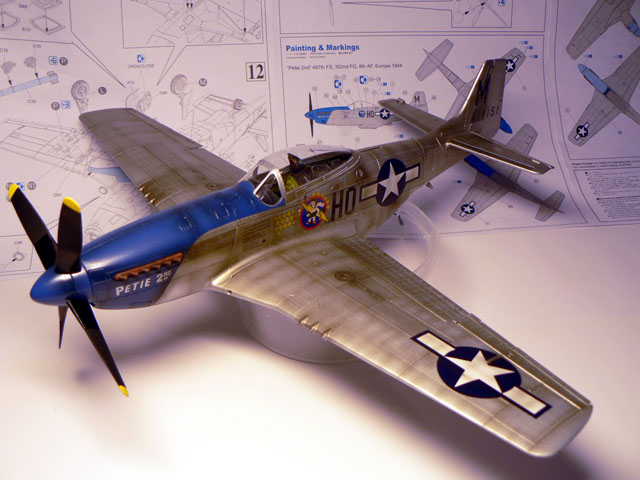
It won't be long until it gets it's bombs and rockets under the wings!

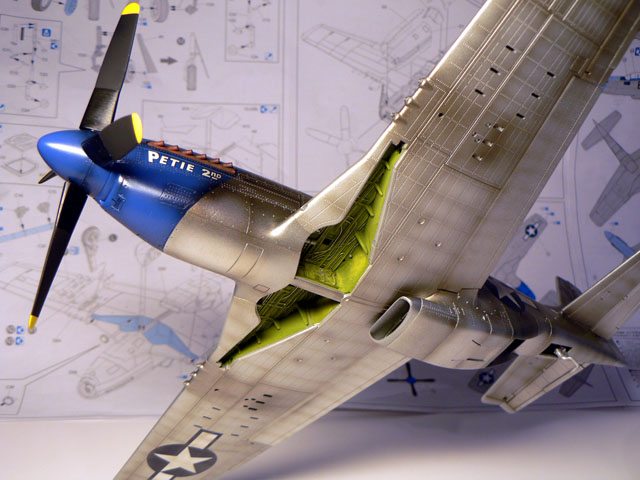
Jean-Luc


oleander13

Joined: October 29, 2006
KitMaker: 30 posts
AeroScale: 28 posts

Posted: Wednesday, January 24, 2007 - 03:02 AM UTC
Wow Jean-Luc, that looks great.
I think I'm going to feel a bit intimidated now when it comes to posting my Yak - 9 photos. It's hard to follow up a model that looks that good.
Seriously though, excellent work!!
I think I'm going to feel a bit intimidated now when it comes to posting my Yak - 9 photos. It's hard to follow up a model that looks that good.
Seriously though, excellent work!!
Blackwulf

Joined: April 20, 2004
KitMaker: 215 posts
AeroScale: 120 posts

Posted: Wednesday, January 24, 2007 - 04:18 AM UTC
Beautiful job on the P-51 Jean-Luc. Are you keeping track of your total build time? It seems as if it is just falling together.
 |












